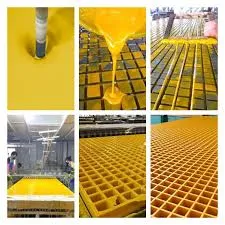
-
 Afrikaans
Afrikaans -
 Albanian
Albanian -
 Amharic
Amharic -
 Arabic
Arabic -
 Armenian
Armenian -
 Azerbaijani
Azerbaijani -
 Basque
Basque -
 Belarusian
Belarusian -
 Bengali
Bengali -
 Bosnian
Bosnian -
 Bulgarian
Bulgarian -
 Catalan
Catalan -
 Cebuano
Cebuano -
 China
China -
 China (Taiwan)
China (Taiwan) -
 Corsican
Corsican -
 Croatian
Croatian -
 Czech
Czech -
 Danish
Danish -
 Dutch
Dutch -
 English
English -
 Esperanto
Esperanto -
 Estonian
Estonian -
 Finnish
Finnish -
 French
French -
 Frisian
Frisian -
 Galician
Galician -
 Georgian
Georgian -
 German
German -
 Greek
Greek -
 Gujarati
Gujarati -
 Haitian Creole
Haitian Creole -
 hausa
hausa -
 hawaiian
hawaiian -
 Hebrew
Hebrew -
 Hindi
Hindi -
 Miao
Miao -
 Hungarian
Hungarian -
 Icelandic
Icelandic -
 igbo
igbo -
 Indonesian
Indonesian -
 irish
irish -
 Italian
Italian -
 Japanese
Japanese -
 Javanese
Javanese -
 Kannada
Kannada -
 kazakh
kazakh -
 Khmer
Khmer -
 Rwandese
Rwandese -
 Korean
Korean -
 Kurdish
Kurdish -
 Kyrgyz
Kyrgyz -
 Lao
Lao -
 Latin
Latin -
 Latvian
Latvian -
 Lithuanian
Lithuanian -
 Luxembourgish
Luxembourgish -
 Macedonian
Macedonian -
 Malgashi
Malgashi -
 Malay
Malay -
 Malayalam
Malayalam -
 Maltese
Maltese -
 Maori
Maori -
 Marathi
Marathi -
 Mongolian
Mongolian -
 Myanmar
Myanmar -
 Nepali
Nepali -
 Norwegian
Norwegian -
 Norwegian
Norwegian -
 Occitan
Occitan -
 Pashto
Pashto -
 Persian
Persian -
 Polish
Polish -
 Portuguese
Portuguese -
 Punjabi
Punjabi -
 Romanian
Romanian -
 Russian
Russian -
 Samoan
Samoan -
 Scottish Gaelic
Scottish Gaelic -
 Serbian
Serbian -
 Sesotho
Sesotho -
 Shona
Shona -
 Sindhi
Sindhi -
 Sinhala
Sinhala -
 Slovak
Slovak -
 Slovenian
Slovenian -
 Somali
Somali -
 Spanish
Spanish -
 Sundanese
Sundanese -
 Swahili
Swahili -
 Swedish
Swedish -
 Tagalog
Tagalog -
 Tajik
Tajik -
 Tamil
Tamil -
 Tatar
Tatar -
 Telugu
Telugu -
 Thai
Thai -
 Turkish
Turkish -
 Turkmen
Turkmen -
 Ukrainian
Ukrainian -
 Urdu
Urdu -
 Uighur
Uighur -
 Uzbek
Uzbek -
 Vietnamese
Vietnamese -
 Welsh
Welsh -
 Bantu
Bantu -
 Yiddish
Yiddish -
 Yoruba
Yoruba -
 Zulu
Zulu
frp chimney construction and installation for industrial and
FRP Chimney Construction and Installation for Industrial Applications
In the modern industrial landscape, the emphasis on sustainability, efficiency, and durability has led to the increased use of Fiber-Reinforced Polymer (FRP) materials in chimney construction and installation. FRP chimneys are becoming a popular choice in various industries due to their unique properties, including corrosion resistance, lightweight nature, and high strength-to-weight ratio, making them ideal for challenging environments.
One of the primary advantages of FRP chimneys is their exceptional resistance to a variety of corrosive substances often found in flue gas emissions. Traditional materials, such as brick or metal, can deteriorate over time when exposed to harsh chemicals, leading to structural failures and increased maintenance costs. In contrast, FRP materials are engineered to endure such conditions, ensuring a longer lifespan and lower overall lifecycle costs.
The construction process of an FRP chimney begins with careful design tailored to specific industrial requirements. This involves selecting appropriate resin systems and reinforcement materials that can withstand the operational temperature, pressure, and chemical exposure levels. The design phase also includes considerations for the chimney's height, diameter, and configuration, which are crucial for optimizing efficiency and compliance with environmental regulations.
frp chimney construction and installation for industrial and

Once the design is finalized, the installation phase can commence. One of the significant benefits of using FRP is the ease of handling and installation. Being lightweight compared to traditional materials, FRP components can be transported and installed with minimal heavy machinery, reducing labor costs and installation time. The modular nature of many FRP chimney systems allows for quicker assembly, facilitating a streamlined construction process without compromising on structural integrity.
During installation, it is vital to adhere to strict safety standards and regulations. Proper anchoring and support structures must be established to ensure stability, especially in regions prone to high winds or seismic activity. Workers should also employ best practices when handling FRP materials to prevent injuries and ensure the integrity of the chimney components.
In conclusion, FRP chimney construction and installation provide a robust solution for industrial applications facing the challenges of corrosion and structural integrity. By leveraging the advantages of FRP materials, industries can achieve enhanced performance while adhering to ecological standards. As environmental concerns continue to rise, the adoption of advanced materials like FRP will play a crucial role in the future of industrial infrastructure.
Latest news
-
Exploring the Benefits of Top Hammer Drifter Rods for Enhanced Drilling PerformanceNewsJun.10,2025
-
High-Precision Fiberglass Winding Machine for GRP/FRP Pipe Production – Reliable & Efficient SolutionsNewsJun.10,2025
-
FRP Pipes & Fittings for Shipbuilding - Corrosion-Resistant & LightweightNewsJun.09,2025
-
Premium FRP Flooring Solutions Durable & Slip-ResistantNewsJun.09,2025
-
Premium Fiberglass Rectangular Tanks Durable & Lightweight SolutionNewsJun.09,2025
-
Tapered Drill String Design Guide Durable Performance & UsesNewsJun.09,2025









